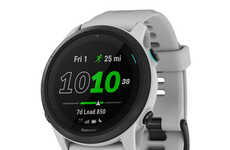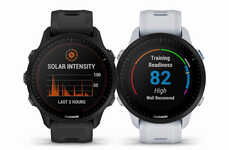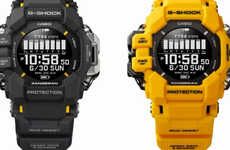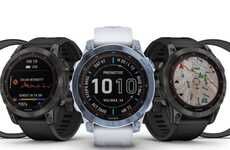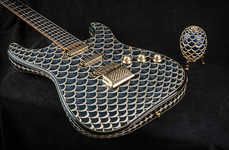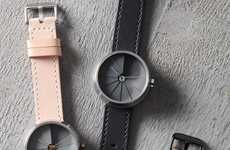
The Garmin Forerunner 235 Features a Heart Rate Sensor
Rahul Kalvapalle — October 28, 2015 — Fashion
References: go.redirectingat & engadget
The Garmin Forerunner 235 is a new GPS watch that happens to be equipped with the first wrist-based heart rate sensor ever seen on a Garmin product.
This particular GPS watch uses the special Garmin Elevate optical sensor, that enables it to display heart rate and training-related information directly on the wearable. The watch's predecessor, the Forerunner 225, is also equipped with an optical sensor although that one was designed by Mio.
This watch allows you to get rid of the invasive, annoying and often odd-looking chest strap, although you have to be willing to pay the price of $329.
At the end of the way, the Garmin Forerunner 235 is a watch that is designed to help you get the most out of your runs and workouts, while learning about your body all the way.
This particular GPS watch uses the special Garmin Elevate optical sensor, that enables it to display heart rate and training-related information directly on the wearable. The watch's predecessor, the Forerunner 225, is also equipped with an optical sensor although that one was designed by Mio.
This watch allows you to get rid of the invasive, annoying and often odd-looking chest strap, although you have to be willing to pay the price of $329.
At the end of the way, the Garmin Forerunner 235 is a watch that is designed to help you get the most out of your runs and workouts, while learning about your body all the way.
Trend Themes
1. Wrist-based Heart Rate Sensors - The development of wrist-based heart rate sensors eliminates the need for invasive and uncomfortable chest straps, opening up new possibilities for wearable technology.
2. Optical Sensor Technology - The use of optical sensors in heart-monitoring sport watches allows for accurate heart rate measurement directly from the wrist, providing convenience and improved user experience.
3. Personalized Fitness Tracking - Heart-monitoring sport watches equipped with advanced sensors and tracking capabilities allow users to gain insights into their body's performance, enabling personalized fitness tracking.
Industry Implications
1. Wearable Technology - The integration of heart rate sensors in sport watches presents disruptive opportunities for the wearable technology industry, creating more user-friendly and precise fitness tracking devices.
2. Fitness and Sports - The introduction of heart-monitoring sport watches revolutionizes the fitness and sports industry by providing athletes and fitness enthusiasts with accurate and real-time heart rate monitoring, enhancing training and performance.
3. Health and Wellness - Heart-monitoring sport watches contribute to the health and wellness industry by offering individuals the ability to easily track and monitor their heart rate during physical activities, promoting overall well-being.
6.5
Score
Popularity
Activity
Freshness

